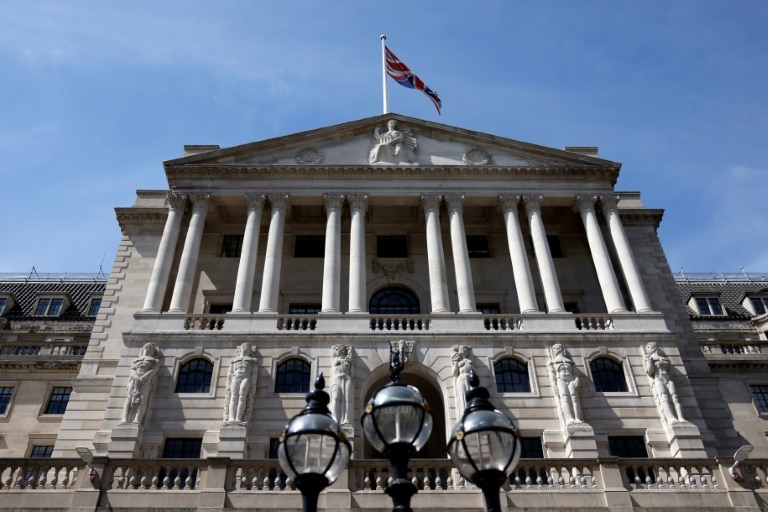Democrats in the United States have passed a sweeping $430bn bill intended to fight climate change, lower drug prices and raise some corporate taxes, in a major victory for President Joe Biden.
The package, known as the Inflation Reduction Act, passed the Senate on Sunday by a 51-50 party line vote with Vice President Kamala Harris casting the tie-breaking ballot.
“The Senate is making history,” an elated Senate Majority Leader Chuck Schumer said, after pumping his fists in the air as cheered Democrats and their staff members responded to the vote with a standing ovation.
“To Americans who’ve lost faith that Congress can do big things, this bill is for you,” he said. “This bill is going to change America for decades.”
Schumer said the legislation contains “the boldest clean energy package in American history” to fight climate change while reducing consumer costs for energy and some medicines.
The action sends the measure to the House of Representatives for a vote, likely Friday when representatives plan to reconvene briefly during a summer recess. They are expected to pass it, which would then send the bill to the White House for Biden’s signature. In a statement, Biden said he looked forward to signing the bill into law.
Democrats hope the bill’s passage will help the party’s House and Senate candidates in the November 8 midterm elections at a time when Biden is suffering from anemic public approval ratings amid high inflation.
Senators engaged in a round-the-clock marathon of voting that began Saturday and stretched late into Sunday. Democrats swatted down some three dozen Republican amendments designed to torpedo the legislation.
Conservative lawmakers have criticized the bill as wasteful spending, with top Republican Senator Mitch McConnell accusing Democrats of voting to “double down on their economic disaster”.
‘Biggest climate investment in US history’
The legislation is aimed at reducing carbon emissions and shifting consumers to green energy, while cutting prescription drug costs for the elderly and tightening enforcement on taxes for corporations and the wealthy.
The bill would invest nearly $375bn over the decade in climate change-fighting strategies including investments in renewable energy production and tax rebates for consumers to buy new or used electric vehicles.
It’s broken down to include $60bn for a clean energy manufacturing tax credit and $30bn for a production tax credit for wind and solar, seen as ways to boost and support the industries that can help curb the country’s dependence on fossil fuels. The bill also gives tax credits for nuclear power and carbon capture technology that oil companies such as Exxon Mobil have invested millions of dollars to advance.
For consumers, there are tax breaks as incentives to go green. One is a 10-year consumer tax credit for renewable energy investments in wind and solar. There are tax breaks for buying electric vehicles, including a $4,000 tax credit for purchase of used electric vehicles and $7,500 for new ones.
In all, Democrats believe the strategy could put the country on a path to cut greenhouse gas emissions 40 percent by 2030, and “would represent the single biggest climate investment in US history, by far”.
“This is a historic achievement,” said Gregory Wetsone, president of the American Council on Renewable Energy.
“This represents the first time in the United States that we have seen Congress take a serious effort to deal with the climate problem. And this bill, the programs it includes, are ones we have been advocating for many years and I think will have a huge impact allowing the clean energy transition that we know we are going to need to deal with climate change,” he told Al Jazeera .
Lower prescription drug costs
On the healthcare front, the bill would allow the Medicare program to negotiate prescription drug prices with pharmaceutical companies for the first time, saving the federal government some $288bn over the 10-year budget window.
Those new revenues would be put back into lower costs for seniors on medications, including a $2,000 out-of-pocket cap for older adults buying prescriptions from pharmacies. It also extends expiring subsidies that help 13 million people afford health insurance.
The bill’s final costs were being recalculated, but overall it would raise more than $700bn over a decade. The money would come from a 15 percent minimum tax on a handful of corporations with annual profits above $1bn, a 1 percent tax on companies that repurchase their own stock, bolstered IRS tax collections, and government savings from lower drug costs.
With some $740bn in new revenue and around $440bn in new investments, the bill promises to put the difference of about $300bn toward deficit reduction.
The latest package is barely more than one-tenth the size of Biden’s initial 10-year, $3.5 trillion rainbow of progressive aspirations in his Build Back Better initiative. It abandoned earlier proposals for universal preschool, paid family leave, and expanded child care aid. That plan collapsed after conservative Senator Joe Manchin, a Democrat, opposed it saying it was too costly and would drive inflation.
Nonpartisan analysts have said the Inflation Reduction Act would have a minor effect on surging consumer prices.
Republicans said the bill would undermine an economy that policymakers are struggling to keep from plummeting into recession. They said the bill’s business taxes would hurt job creation and force prices skyward, making it harder for people to cope with the nation’s worst inflation since the 1980s.
“Democrats have already robbed American families once through inflation, and now their solution is to rob American families a second time,” McConnell, the Senate Minority leader, argued.
He said spending and tax increases in the legislation would eliminate jobs while having an insignificant effect on inflation and climate change.
.









